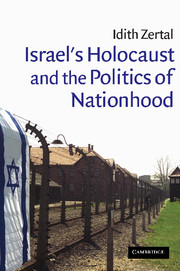Book contents
Introduction
Published online by Cambridge University Press: 13 August 2009
Summary
“From … remorselessly accumulating cemeteries,” writes Benedict Anderson at the closure of his book Imagined Communities, “the nation's biography snatches exemplary suicides, poignant martyrdoms, assassinations, executions, wars and holocausts. But to serve the narrative purpose, these violent deaths must be remembered/forgotten as ‘our own’.” These words reverberate deep within the present book, which deals with the way the Israeli-Zionist nation's biography in the course of the twentieth century gathered its catastrophes, wars, and victims, embraced them, remembered and forgot them, told their stories in its own way, endowed them with meaning, bequeathed them to its children, shaped its own image through them, viewing itself in them as if it were all these. This is a book about Israeli nation-ness and nationalism, about death in its national public sphere, and the fatal connection between them: about the memory of death and culture of death and the politics of death in the service of the nation. To the same degree, it is a book about collective memory, about memory as an agent of culture, shaping consciousness and identity and shaped by them in a constant reciprocal process; about the way in which Israel's collective memory of death and trauma was created and produced, and how it has been processed, coded, and put to use in Israel's public space, particularly in the half-century which has lapsed since the destruction of European Jewry.
- Type
- Chapter
- Information
- Publisher: Cambridge University PressPrint publication year: 2005

